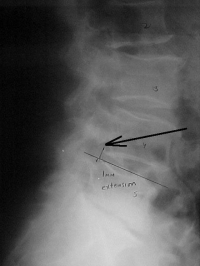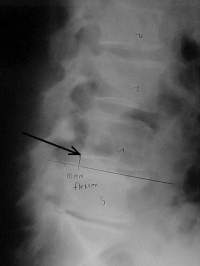Lumbar Spine Instability Overview
Unnatural movement and excessive motion of the vertebral bodies within the lumbar spine (lower back) in relation to one another is considered lumbar spine instability. When global damage occurs to the two main stabilizing structures that make up the spine (disc and both facets), instability can result. Instability in this region will make a patient feel as if the areas within the lower spine are moving at greater motions than what the bone and muscle can tolerate. The cause of lumbar spine instability can be the result of a degenerative process (such as wear and tear arthritis), as well as a tumor, a previous injury or a congenital condition.
Patients with lumbar spine instability typically have reoccurring episodes of sharp immediate lower back pain and the loss of mobility. It may seem like a paradox that excessive motion leads to decreased mobility, but in the condition of lumbar spine instability this is generally true. A patient who is experiencing this type of excessive motion usually tries to reduce the painful vertebral slip. He or she will do this by contracting the muscles of the back and belly and reducing the amount of bending he or she does. This reduces the range of motion of the lumbar spine.
Are you suffering from symptoms of lumbar spine instability?
Would you like to consult with Dr. Corenman about your condition?
You can set up a long distance consultation to discuss your
current X-rays and/or MRIs for a clinical case review.
(Please keep reading below for more information on this condition.)
Symptoms of Lumbar Spine Instability
Symptoms of instability within the lower spine include lower back pain accompanied with an on-going unstable sensation within the region. Many patients find it difficult to rotate their mid-section. Muscle spasms are also a common occurrence for patients experiencing instability. A painful clunk can occur with motion and an unprepared patient who steps off a too high curb will get an electrical jolt to their back.
Treatment of Lumbar Spine Instability
Non-Surgical
Non-surgical treatments are typically enough to control the symptoms of lumbar spine instability. Non-steroidal, anti-inflammatory medication along with physical therapy and prescribed exercises typically work well. A core strengthening program and neutral spine program are important.
Surgical
If these non-surgical remedies do not work, then a surgery involving stabilization and fusion will most likely be the next course of treatment for lumbar spine instability.
Please contact Dr. Donald Corenman, back doctor and spine specialist, for additional information, a consultation, or a second opinion on lumbar spine instability.
Related Content
- When to Have Lower Back Surgery
- Causes of Lower Back Pain
- Normal Spinal Alignment
- Lumbar Spinal Alignment
- How to Describe Your History and Symptoms of Lower Back and Leg Pain
- Best Questions to Ask When Interviewing a Spine Surgeon or Neurosurgeon
- Degenerative Spondylolisthesis
- Isolated Disc Resorption-Lumbar Spine (IDR)
- Lumbar Spinal Stenosis (Central Stenosis)


